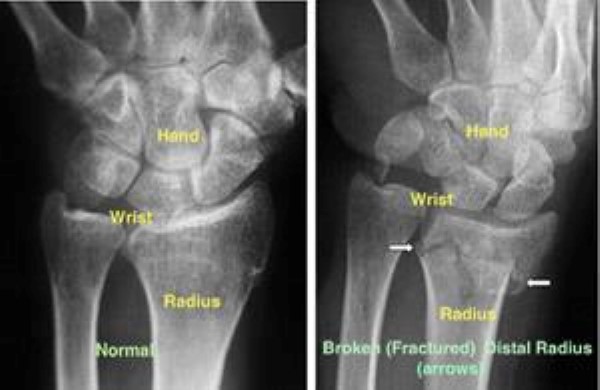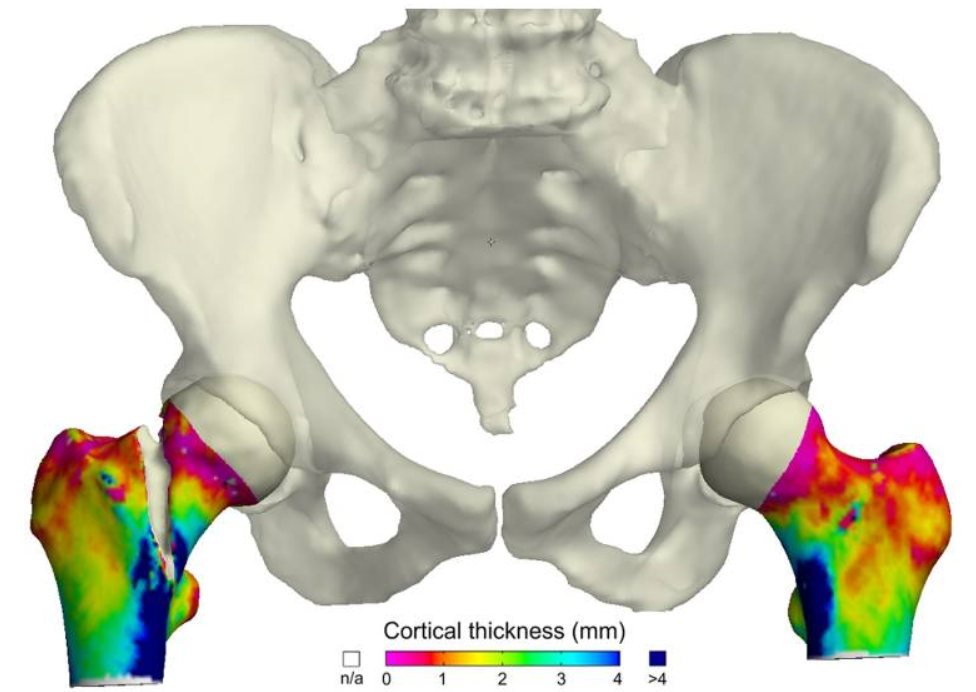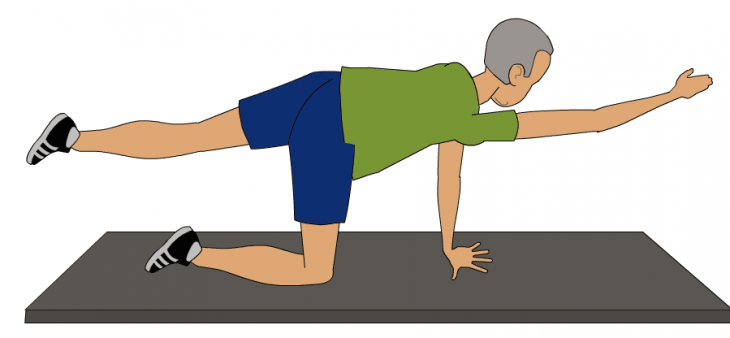Image source
Osteoporosis / Osteopenia patients should have a “fall plan” in place ready for action if some reason you they slip or trip while walking. Did you know a sideways fall increases hip fracture risk by 3-5x and up to 30x with impact to the greater trochanter. Dr. Stuart J. Warden, PT, PhD recommends patients drop what you are carrying and reach out with your hands to stop or diminish a fall onto the hip. I know it sounds morbid, but a wrist fracture is much better than a hip fracture.


According to the American Surgeon General’s Report on Bone Health and Osteoporosis:
- 20% of hip fracture patients die within one year due to medical complications.
- One in five people with a hip fracture dies within a year of their injury.
- One in three adults who lived independently before their hip fracture remains in a nursing home for a least a year after their injury. Many others become isolated, depressed or frightened to leave home because they fear they will fall.
- One in three women and one in nine men over the age of 80 will have a hip fracture.
- One in two women and one in four men will have an osteoporotic fracture in their lifetime.
What about your wrist?
- The wrist builds bone differently than the femur which depends upon weight bearing to stimulate bone building.
- Don’t be afraid to do upper extremity weight-bearing exercises to stimulate the wrist.
- Work on balance training daily for fall prevention which in turn decreases wrist fractures
- Weight bearing exercises like quadruped are excellent for bone building density in the wrist.
- If weight bearing isn’t tolerated then modifications like blocks, small free weights on the ground, wedges, rolled up towel or yoga help reduce pressure on wrist joints.

Make your home safer
- Remove things you can trip over from stairs and places where you walk.
- Remove all small rugs.
- Don’t use step stools. Keep items you need within easy reach.
- Have grab bars put in next to your toilet and in the bathtub or shower.
- Use non-slip mats in the bathtub and shower.
- Use brighter light bulbs in your home.
- Add handrails and light in all staircases.
- Wear shoes that give good support and have non-slip soles.
Review your medicines with healthcare provider
Ask your doctor, nurse, pharmacist or other health care professional to review all the medicines you are taking. Make sure to mention over-the-counter medicine, such as cold medicine. As you get older, the way some medicines work in your body can change. Some medicines or combinations of medicines, can make you drowsy or light-head, which can lead to a fall.
Get your vision checked
Poor vision increases your risk of falling. You could be wearing the wrong glasses or have a condition such as glaucoma or cataracts that limits your vision. According to the Mayo Clinic glaucoma is a group of eye conditions placing abnormally high pressure on the eye that can damage the optic nerve which is vital for good vision. A patient with cataracts experiences clouding of the normally clear lens of the eye. For people who have cataracts, seeing through cloudy lenses is a bit like looking through a frosty or fogged-up window. Clouded vision caused by cataracts can make it more difficult to read, drive a car (especially at night) or see the expression on a friend’s face.
Live Well, Live Strong, Live Long
Nearly half of us do not get enough physical activity to strengthen our bones. The same healthy lifestyle that strengthens your bones strengthens your whole body. Developing healthy habits are good for all your organs, including your bones. Be aware of your risk and work to reduce them. Get help from family and friends, your doctor, nurse, pharmacist or health care professional. Building healthy bones begins at birth and lasts your whole life.
- Be physically active every day. For children at least 60 minutes and for adults at least 30 minutes. do strength-building and weight bearing activities to build strong bones.
- Eat a healthy diet. Educate yourself on proper nutrition. Be aware that certain foods are naturally rich in calcium and vitamin D. Get the recommended amounts of calcium and vitamin D daily.
- Reduce your risk of falling. Check your home for loose rugs, poor lighting, etc. Take classes that increase balance, coordination and strength like Tai Chi, pilates, or yoga.
These are just a few moves to keep you moving. We believe in treating the whole person with a holistic approach and blend our knowledge and training of movement, nutrition, massage therapy and traditional chinese medicine.
We love teaching mindful movement and even during this time, we are here to support you in your journey to wellness by offering online remote training from anywhere in the world. Contact us today to get started and learn to move with less pain and greater ease. We look forward to answering your movement questions and/or concerns.
Feel free to check out our blog posts specific to pilates, pre/post natal, bone building for osteoporosis/osteopenia, mindful meditation, restorative yoga therapy, partner and endurance training.
Assumption of the Risk: By attempting any of the exercises, you do so at your own risk. We make no representations, guarantees or warranties that the information or exercises on this blog are appropriate for you or will result in improvements of your medical condition or function.
Not medical advice or physical therapy. This content is intended to provide information and instructions on general exercises that may help increase strength, mobility, and function for specific areas of the body. It is not intended to be a substitute for obtaining a medical diagnosis or medical or physical therapy advice from a qualified licensed provider. You should seek medical advice from a qualified physician or physical therapist before trying any of the exercises or self-treatment suggestions on this blog, particularly if your pain is from a traumatic injury or event.
References:
- MAGOKS, R., 2007. The Bone Response to Non-Weight-Bearing Exercise is Sport, Site
and Sex-Specific. Journal of Sports Medicine, 17(2),. - MAYO CLINIC STAFF, May 17, 2018a-last update, Cataracts.
- MAYO CLINIC STAFF, November 14, 2018b-last update, Glaucoma.
- POOLE, K., TREECE, G., MAYHEW, P., VACULIK, J. and DUNGL, P., 2012. Cortical Thickness Mapping to Identify Focal Osteoporosis in Patients with Hip Fracture. PloS One., 7 (6)(38466),.
- U.S. DEPARTMENT OF HEALTH AND HUMAN SERVICES UNDER THE DIRECTION OF THE OFFICE OF THE SURGEON GENERAL, 2017. The Surgeon General’s Report on Bone Health and Osteoporosis: What It Means to You.

